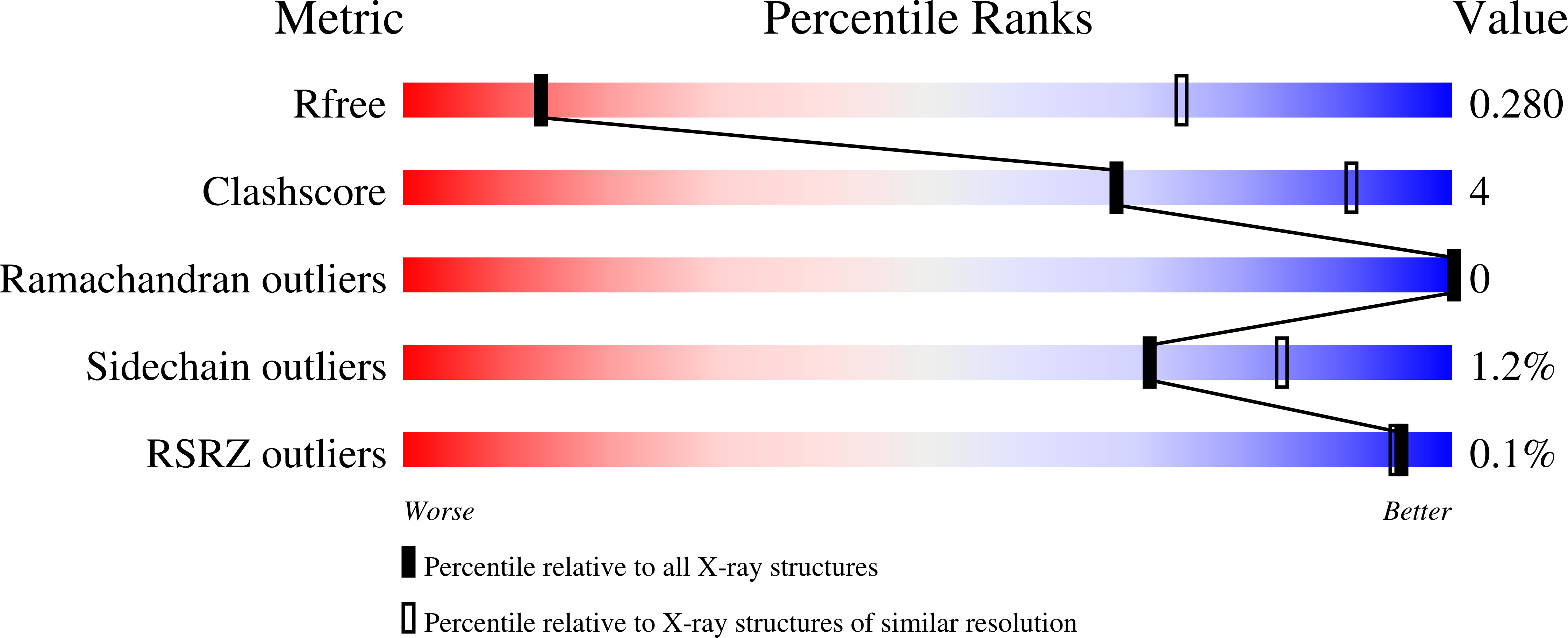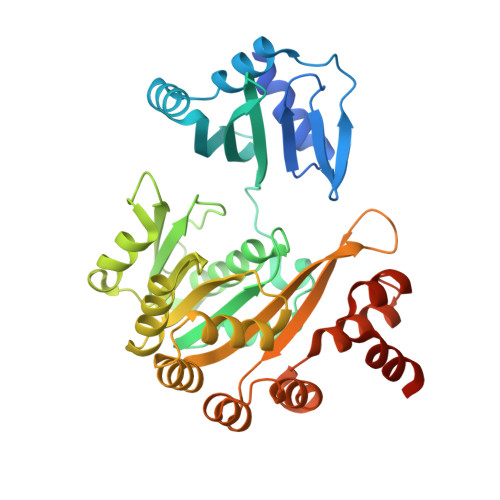Multiple conformations facilitate PilT function in the type IV pilus.
McCallum, M., Benlekbir, S., Nguyen, S., Tammam, S., Rubinstein, J.L., Burrows, L.L., Howell, P.L.(2019) Nat Commun 10: 5198-5198
- PubMed: 31729381
- DOI: https://doi.org/10.1038/s41467-019-13070-z
- Primary Citation of Related Structures:
6OJX, 6OJY, 6OJZ, 6OK2, 6OKV, 6OLJ, 6OLK, 6OLL, 6OLM - PubMed Abstract:
Type IV pilus-like systems are protein complexes that polymerize pilin fibres. They are critical for virulence in many bacterial pathogens. Pilin polymerization and depolymerization are powered by motor ATPases of the PilT/VirB11-like family. This family is thought to operate with C 2 symmetry; however, most of these ATPases crystallize with either C 3 or C 6 symmetric conformations. The relevance of these conformations is unclear. Here, we determine the X-ray structures of PilT in four unique conformations and use these structures to classify the conformation of available PilT/VirB11-like family member structures. Single particle electron cryomicroscopy (cryoEM) structures of PilT reveal condition-dependent preferences for C 2, C 3 , and C 6 conformations. The physiologic importance of these conformations is validated by coevolution analysis and functional studies of point mutants, identifying a rare gain-of-function mutation that favours the C 2 conformation. With these data, we propose a comprehensive model of PilT function with broad implications for PilT/VirB11-like family members.
Organizational Affiliation:
Department of Biochemistry, University of Toronto, Toronto, ON, M5S 1A8, Canada.

















